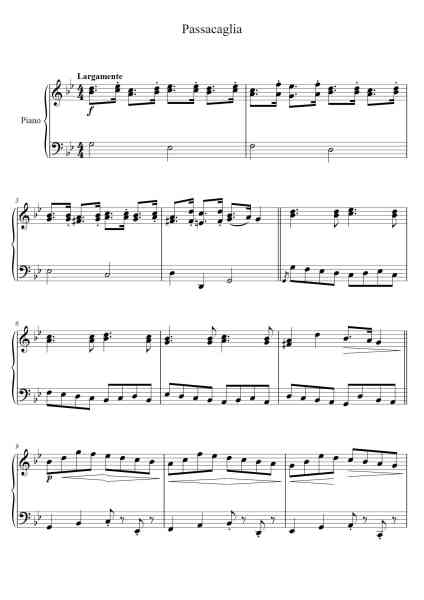
Passacaglia in G Minor for Violin and Viola, Op. 20 No. 2
Johan Halvorsen/George Frideric Handel
1.4K views

Passacaglia in G Minor for Violin and Viola (Handel/Halvorsen)
George Frideric Handel/Johan Halvorsen
800 views

Passacaglia in G Minor for Violin and Viola (Handel/Halvorsen) "Easy Version"
Georg Friedrich Händel
719 views

Passacaglia in G Minor for Violin and Viola (after Handel) by Halvorsen
Georg Friedrich Händel
265 views

Passacaglia in G Minor for Violin and Viola (after Handel), HWV 432: VI. Passacaglia
Johan Halvorsen
250 views

Passacaglia in G Minor for Violin and Viola (Handel/Halvorsen) arr. Pianistos
Georg Friedrich Händel
240 views

Passacaglia in G Minor for Violin and Viola (Piano Solo arr. by Johan Halvorsen)
Georg Friedrich Händel
146 views

Passacaglia in G Minor for Violin and Viola (after Handel), by Johan Halvorsen
Georg Friedrich Händel
144 views
Roblox Sheet

Roblox Sheet
Passacaglia for Violin and Viola in G minor (Handel/Halvorsen)
Johan Halvorsen
Experience Passacaglia for Violin and Viola in G minor (Handel/Halvorsen) by Johan Halvorsen in a whole new way! Use your keyboard to play Passacaglia for Violin and Viola in G minor (Handel/Halvorsen) Roblox Piano Sheets on the Virtual Keyboard Piano. Whether you're a Roblox piano game player or want to practice classic pieces, this Passacaglia for Violin and Viola in G minor (Handel/Halvorsen) Roblox Piano Sheet is perfect for you, making it easy to progress from beginner to expert. Passacaglia for Violin and Viola in G minor (Handel/Halvorsen) is featured in the TOP 100 Roblox Piano Sheets, along with many other easy, classical , pop, Christmas songs, and Disney collections for you to playing!
21 views











